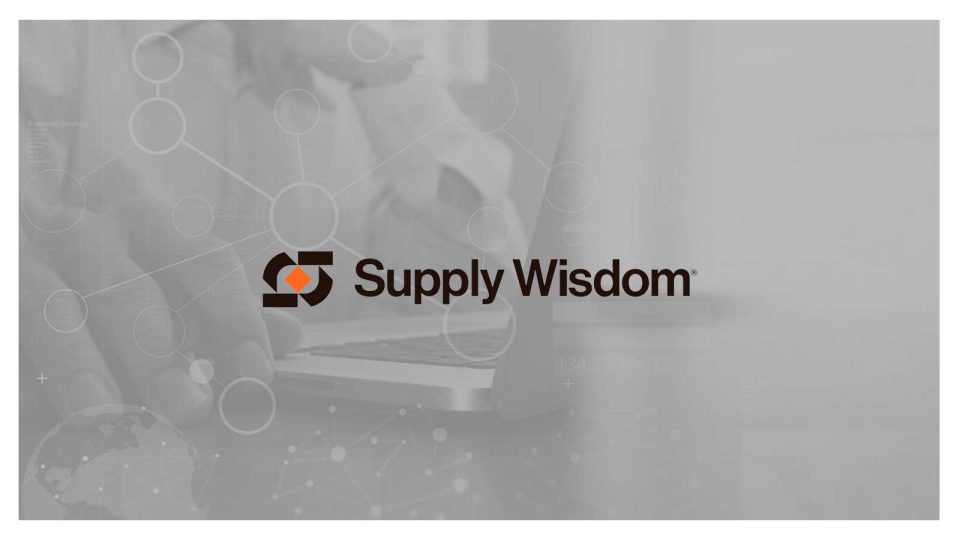A Disconnect Exists Between the Importance of Risk Monitoring and Management Technology, the Actual Implementation of these Tools, and if Risk Management Programs are Meeting Regulatory and Contractual Requirements
Supply Wisdom, the market’s only full-stack, real-time risk intelligence SaaS platform powered by Artificial Intelligence (AI), unveiled the findings of its first annual survey, “Risk Management in a Technology-Driven World,” conducted to gauge attitudes toward risk management at companies of varying sizes and locations. The survey specifically looks at how companies are tackling risk assessment within their vendor and supplier populations, the types of risks they are prioritizing, and their use of technology and artificial intelligence (AI) to monitor risk, among other themes.
Also Read: Misconceptions and Myths around the Role of a Modern CTO
With rising geopolitical, economic, and environmental uncertainties, outsourcing certain functions can save organizations time and money, and potentially unlock new revenues. However, with these benefits also come potential risks that may exist within their supply chains and vendor relationships. This is why vendor, supplier, and contractor assessments are key to a successful third-party risk management strategy – but not all assessment methods are created equal.
Many companies have begun to recognize that traditional assessment methods are no longer sustainable in today’s risk management landscape and that they must instead embrace innovative technology to monitor risk. The report found that nearly 80% of respondents view technology as very or extremely important in risk management programs. However, there appears to be a disconnect between perception and action as 57% of respondents report that they do not currently use AI in their risk assessment.
Also Read: Mattermost Partners with BrainGu and goTenna to Enable Tactical ChatOps With Delivery of Low-Bandwidth TAK Integration
Other key findings of the report include:
- The top risk types monitored for are Financial Risk (65%), Operations Risk (64%), Compliance Risk (51%) and Cyber Risk (51%).
- Less than 15% of procurement and supplier management professionals, respectively, report using continuous monitoring tools to assess suppliers, highlighting an underutilization of technology in risk assessment.
- 62% of businesses do not strongly believe their risk monitoring program is meeting contractual and regulatory requirements.
- North American companies use fewer third party & Nth party vendors than European companies. 47% of European companies reported vendors in as many as 49 countries, compared to 22% of NA companies who said the same.
“We live in an increasingly volatile and unpredictable world, where the pace of change is continuously accelerating. Companies, driven by the need to stay competitive while reducing costs, are outsourcing various functions to third parties with increasing frequency,” said Tom Thimot, CEO of Supply Wisdom. “The trend shows no sign of slowing as businesses seek specialized expertise and efficiencies, but this extensive reliance on third-party vendors brings a host of new challenges and risks. Yet concerningly, our survey found that most participants do not have a clear understanding of the make-up of their supplier, vendor, and contractor populations—or the risk levels that may exist within those groups.”
“The rapidly evolving business, technology, and political environment in which we live, and work is filled with uncertainties for leaders as they manage their businesses. Executive teams, acutely aware of the cost savings and potential new revenues afforded by outsourcing certain functions, may move too quickly to onboard new vendors to accelerate the benefits of outsourcing, opening their business to potential risks,” said Jenna Wells, Chief Customer & Product Officer at Supply Wisdom. “To proactively manage the challenges of contractual requirements, regulatory complexities, and the inevitable business disruptions that have become so common, companies must have a full view of their supplier population – from who they are and their criticality to the organization to their specific location – to adequately mitigate risks. Further, the value of the strategic insight provided by continuous monitoring cannot be understated, so leveraging automation to enhance detective controls across the broad landscape of risk types must be considered for any holistic third-party risk management program.”
The survey was conducted over two weeks from March 20 to April 2, 2024, with approximately 200 professionals working in Third Party Risk Management, Procurement, Vendor Management, and similar roles in the United States, Canada, United Kingdom, France, Germany, and Ireland.
[To share your insights with us as part of editorial or sponsored content, please write to psen@itechseries.com]


